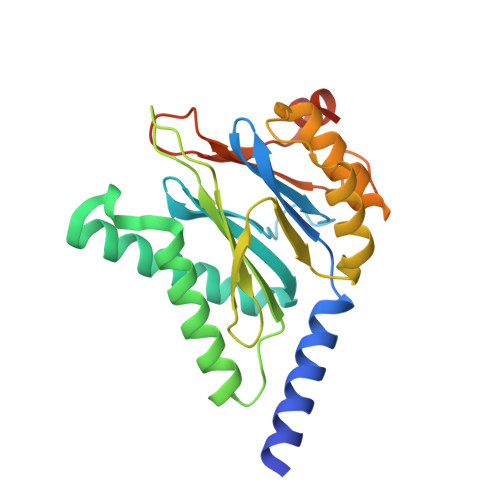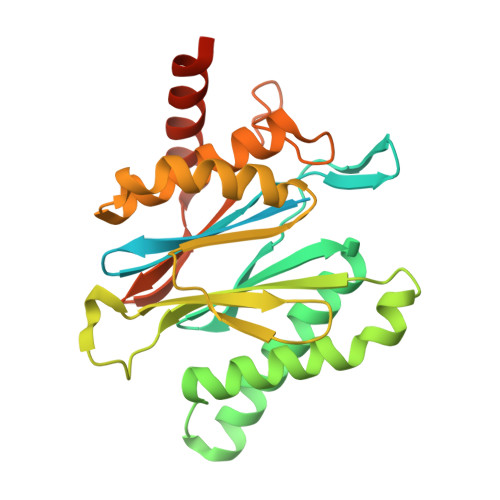The beta-Grasp Domain of Proteasomal ATPase Mpa Makes Critical Contacts with the Mycobacterium tuberculosis 20S Core Particle to Facilitate Degradation.
Xiao, X., Feng, X., Yoo, J.H., Kovach, A., Darwin, K.H., Li, H.(2022) mSphere 7: e0027422-e0027422
- PubMed: 35993699
- DOI: https://doi.org/10.1128/msphere.00274-22
- Primary Citation of Related Structures:
8D6V, 8D6W, 8D6X, 8D6Y - PubMed Abstract:
Mycobacterium tuberculosis possesses a Pup-proteasome system analogous to the eukaryotic ubiquitin-proteasome pathway. We have previously shown that the hexameric mycobacterial proteasome ATPase (Mpa) recruits pupylated protein substrates via interactions between amino-terminal coiled-coils in Mpa monomers and the degradation tag Pup. However, it is unclear how Mpa rings interact with a proteasome due to the presence of a carboxyl-terminal β-grasp domain unique to Mpa homologues that makes the interaction highly unstable. Here, we describe newly identified critical interactions between Mpa and 20S core proteasomes. Interestingly, the Mpa C-terminal GQYL motif binds the 20S core particle activation pocket differently than the same motif of the ATP-independent proteasome accessory factor PafE. We further found that the β-hairpin of the Mpa β-grasp domain interacts variably with the H0 helix on top of the 20S core particle via a series of ionic and hydrogen-bond interactions. Individually mutating several involved residues reduced Mpa-mediated protein degradation both in vitro and in vivo . IMPORTANCE The Pup-proteasome system in Mycobacterium tuberculosis is critical for this species to cause lethal infections in mice. Investigating the molecular mechanism of how the Mpa ATPase recruits and unfolds pupylated substrates to the 20S proteasomal core particle for degradation will be essential to fully understand how degradation is regulated, and the structural information we report may be useful for the development of new tuberculosis chemotherapies.
- Department of Structural Biology, Van Andel Institutegrid.251017.0, Grand Rapids, Michigan, USA.
Organizational Affiliation:


















